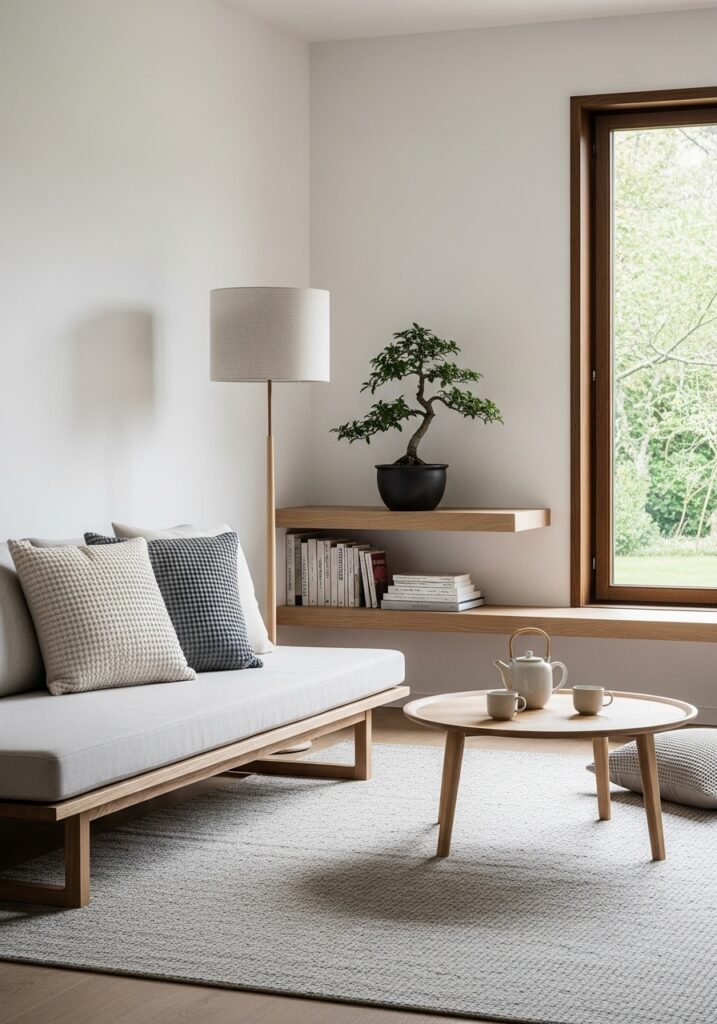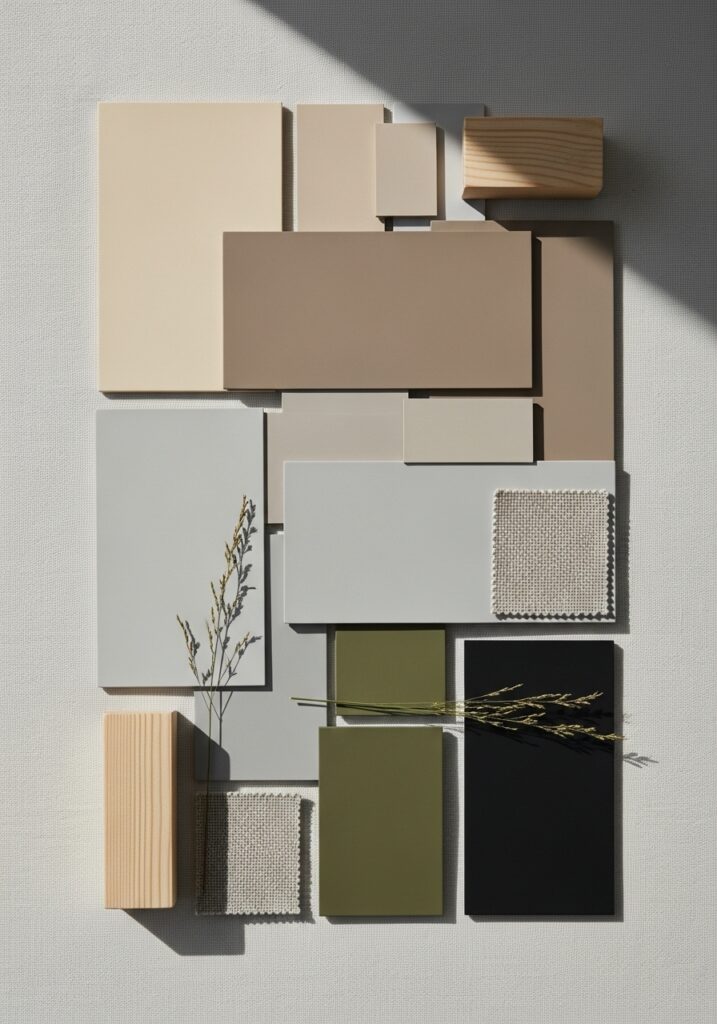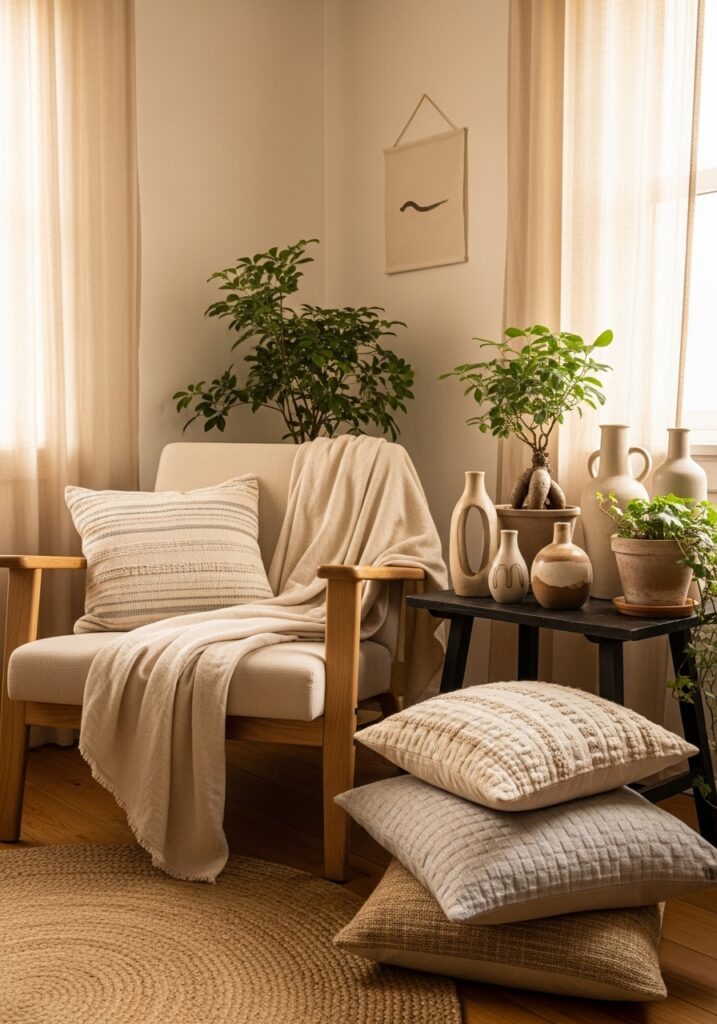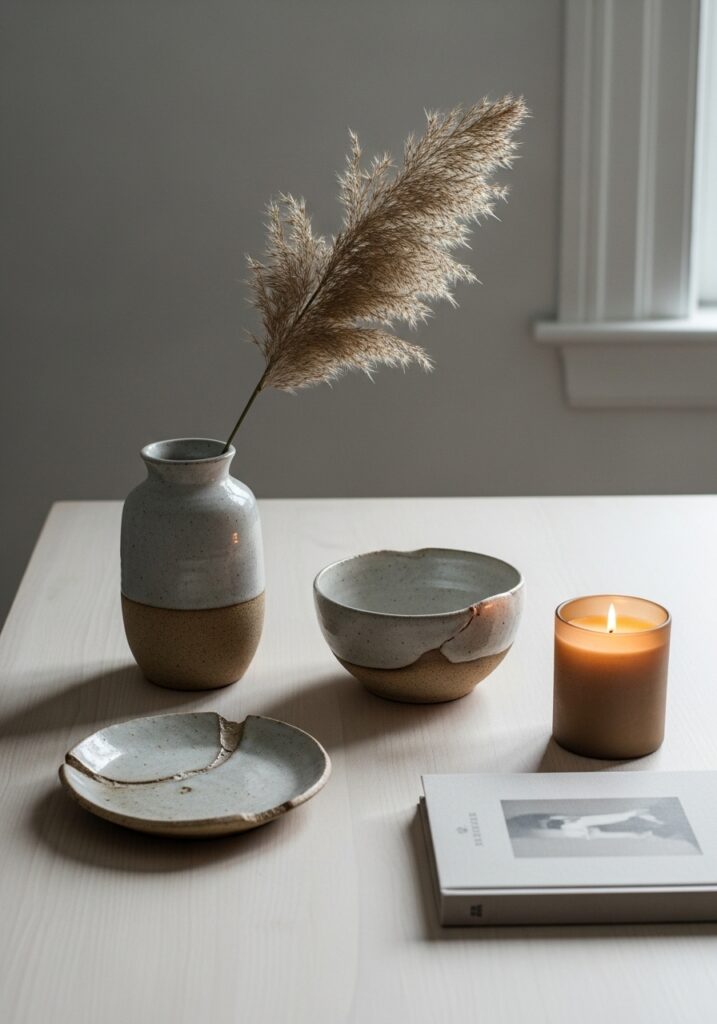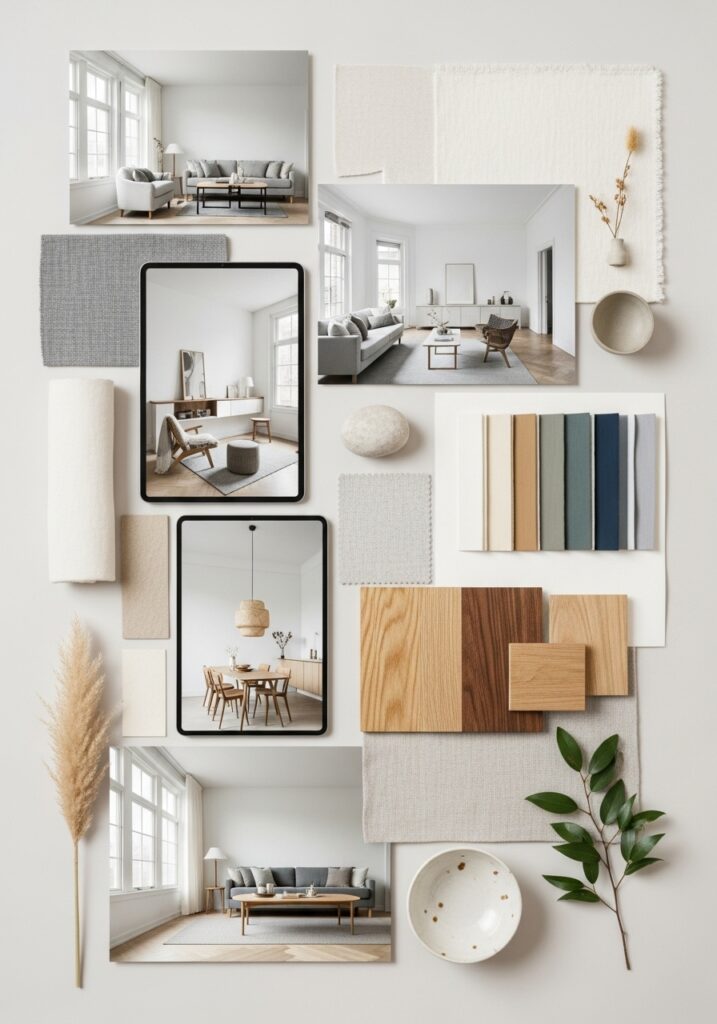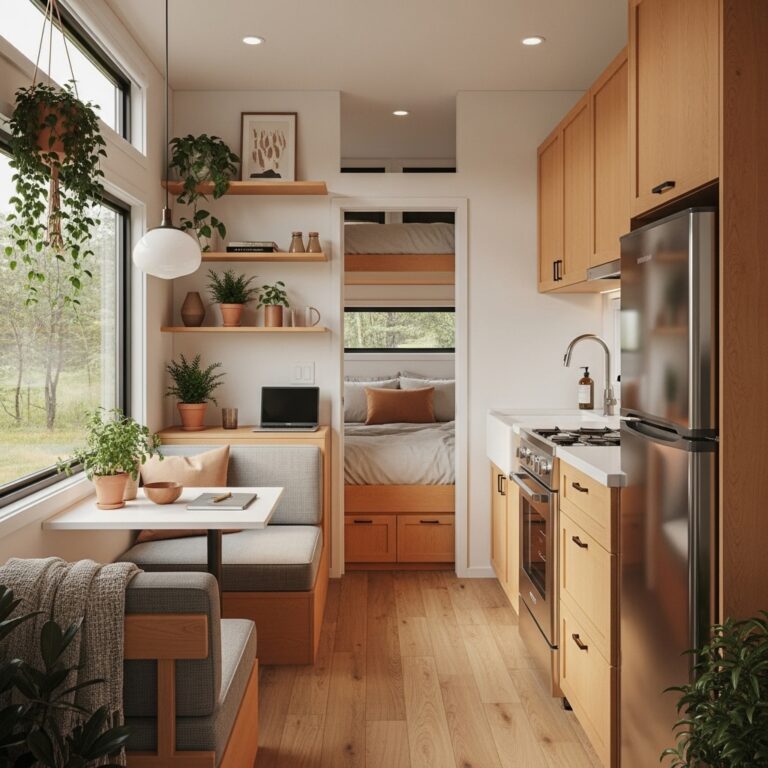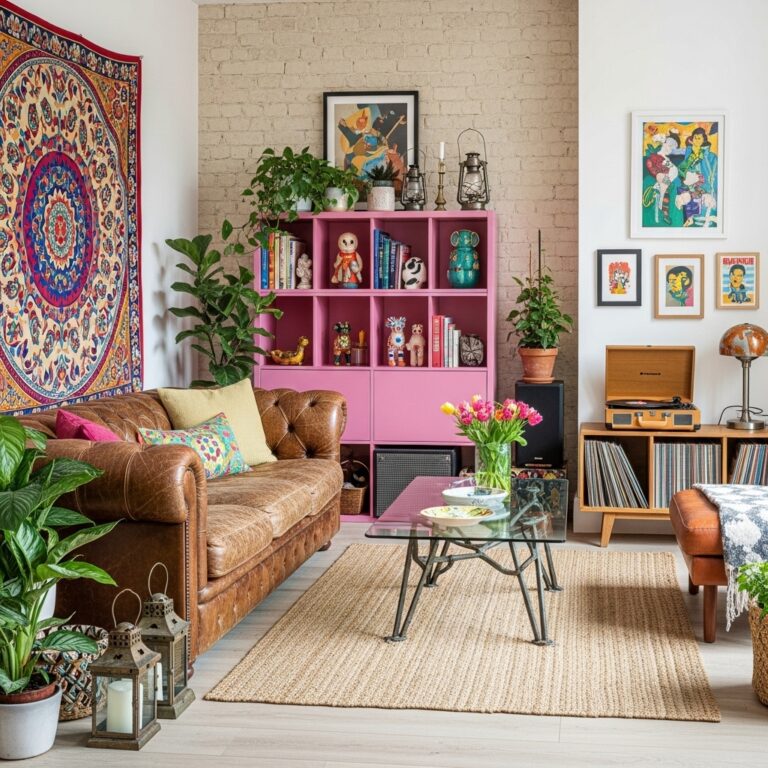Your Guide to Japandi Style: Effortless Calm Meets Cozy Simplicity
If you’ve ever looked at a room and thought, “Wow, this feels calm yet cozy, simple yet so beautiful,” chances are, you were looking at something Japandi-inspired.
This design trend has quietly taken over Pinterest, home magazines, and moodboards everywhere — and for good reason! It’s that perfect blend of Scandinavian simplicity and Japanese elegance, creating a style that’s both minimal and warm, modern and timeless.
I still remember the first time I stumbled upon a Japandi photo while redesigning my workspace. It wasn’t loud or flashy, but something about the balance of clean lines, earthy tones, and soft textures instantly pulled me in. And honestly? I’ve been obsessed ever since.
So grab a cup of coffee (or matcha latte 🍵), and let’s chat about how you can create your own Japandi style moodboard — a visual roadmap to the calm, cozy, minimalist home you’ve always dreamed of.
What Exactly Is Japandi Style?
Think of Japandi as the love child of Scandinavian and Japanese interior design.
It brings together the functional simplicity of Nordic design with the zen-like tranquility of Japanese aesthetics.
Here’s how I like to sum it up:
“If Hygge (the Scandinavian coziness) met Wabi-Sabi (the Japanese beauty of imperfection), their home would look very Japandi.”
Core Principles of Japandi:
- Minimalism with warmth – Nothing cluttered, but nothing sterile either.
- Natural materials – Wood, linen, stone, and bamboo rule the space.
- Muted color palette – Think beige, taupe, warm whites, and soft blacks.
- Functional beauty – Every item serves a purpose and adds aesthetic value.
It’s not about buying more — it’s about choosing intentionally and letting your home breathe.
Step 1: Build Your Japandi Style Moodboard
Creating a modern Japandi moodboard is one of the most fun (and satisfying) steps in your design journey. It’s where inspiration meets structure.
Here’s how to start:
- Collect Images That Speak to You
Search for Japandi interior design ideas on Pinterest or Instagram. Save photos with neutral walls, cozy wooden furniture, and clean decor. - Focus on Harmony, Not Perfection
Look for spaces that feel balanced. You’ll notice that no single element screams for attention — they all quietly coexist. - Add Real-Life Textures
Pin or photograph wood grains, linen fabrics, jute rugs, or even ceramic mugs. Japandi is all about touchable textures. - Play With the Light
Choose images showing natural daylight filtering through linen curtains — it’s that soft, calming vibe we’re after.
Once you’re done, step back and ask yourself: Does this board make me feel peaceful? If yes, you’re on the right track!
Step 2: The Japandi Color Palette
The beauty of Japandi color palette inspiration lies in its restraint.
This style avoids overly bright hues and leans into warm neutrals, muted tones, and earth-inspired shades.
Japandi Color Palette Breakdown:
- Base Colors: Off-white, beige, stone gray, greige.
- Accent Colors: Charcoal, soft black, muted terracotta.
- Nature Tones: Olive green, sand, light wood, clay.
If you’re building your Japandi aesthetic moodboard, make sure your palette includes a mix of light and dark neutrals for contrast.
For example:
- Pair warm oak furniture with charcoal linen curtains.
- Add a beige rug under a black metal coffee table.
It’s this mix that keeps the room from feeling flat or monotonous.
Step 3: Furniture — Simple, Functional, Beautiful
When curating Japandi furniture, the key is to find that sweet spot between Scandinavian practicality and Japanese craftsmanship.
What to Look For:
- Clean lines: Avoid anything overly ornate or detailed.
- Natural finishes: Choose light or medium wood tones like ash, beech, or oak.
- Low-profile furniture: Think low beds, grounded coffee tables, and minimal legs.
- Multi-purpose pieces: Storage benches or modular shelving keep the look clutter-free.
Pro Tip: Before buying new furniture, declutter what you already have. Japandi is about less but better — every piece should serve a purpose and feel intentional.
Step 4: Cozy Japandi Design Elements
Let’s talk textures and cozy details — because even minimalists crave warmth!
Add Softness Through:
- Throw blankets made of cotton, wool, or linen.
- Textured cushions in muted tones.
- Rugs made from jute or wool blends.
- Ceramic decor pieces that highlight hand-crafted imperfection.
These elements turn your space from “minimal” to “minimal yet inviting.”
And don’t forget the power of greenery! A few well-placed plants — like bonsai, bamboo, or snake plants — add a living element to your Japandi setup.
Step 5: Lighting — Soft, Natural, and Zen
Lighting can make or break your neutral Japandi home styling. You want it to feel natural, layered, and calm.
Lighting Tips:
- Maximize daylight. Keep window treatments light and airy.
- Use warm LED lights. Avoid harsh white bulbs.
- Layer your light sources. Combine floor lamps, wall sconces, and candles.
- Choose organic shapes. Rattan pendants or paper lanterns bring soft texture.
In a Japandi room, light should flow gently — no bright glares or over-illumination. The idea is to create a peaceful rhythm between day and night.
Step 6: Accessorizing the Japandi Way
Here’s where many people go wrong — they over-decorate.
But in Japandi interior design, less really is more.
Styling Tips:
- Choose fewer, high-quality items rather than many small ones.
- Display handmade pottery, simple vases, or woven baskets.
- Use books and candles for warmth and personality.
- Keep surfaces clear — a single decor piece per tabletop is often enough.
Remember, every accessory should serve a purpose — whether it’s functional or emotional.
IMO, the most beautiful Japandi spaces tell a quiet story: one of mindfulness, calm, and intention.
Step 7: Bringing It All Together — The Modern Japandi Moodboard
By now, you’ve gathered visuals, colors, textures, and furniture ideas.
Now, let’s combine them into a cohesive modern Japandi moodboard that inspires your next home project.
Here’s what to include:
- Main image: A complete Japandi room for reference.
- Color swatches: 5–6 key tones from your palette.
- Textures: Wood, linen, clay, and rattan close-ups.
- Furniture icons: Your must-have pieces (desk, chair, lamp).
- Decor ideas: Ceramic vases, cushions, or plants.
When you look at your board, you should feel that gentle calmness — that’s the Japandi aesthetic in motion.
Step 8: Contemporary Japandi Room Ideas
If you’re thinking about where to start, here are a few contemporary Japandi room ideas for every corner of your home:
Bedroom
- Low bed frame with crisp linen sheets.
- Wooden side tables with ceramic lamps.
- Neutral bedding with a cozy throw blanket.
Living Room
- Simple sectional sofa with textured cushions.
- Floating shelves displaying pottery or books.
- Layered lighting and a jute rug.
Workspace
- Clean desk setup with natural light.
- A few green plants and bamboo organizers.
- Neutral walls with a motivational art print.
Bathroom
- Wooden stool, soft towels, and matte black fixtures.
- A small vase with a single dried stem for that spa-like vibe.
Each space should feel like an extension of the same calm energy — unified through color, texture, and simplicity.
Why Japandi Works in Modern Homes
The reason Japandi style inspiration keeps trending is because it’s timeless and adaptable.
Whether you live in a studio apartment or a big house, this design philosophy fits right in.
Here’s why it resonates:
- It promotes mindful living, not mindless decorating.
- It emphasizes comfort without clutter.
- It feels modern yet rooted in tradition.
In a world that’s often chaotic and overstimulating, your home becomes your peaceful retreat — your personal sanctuary.
Final Thoughts: Your Japandi Journey Starts Now
Creating your own Japandi moodboard isn’t just about interior design — it’s about curating a lifestyle that reflects balance, calm, and authenticity.
As you experiment with textures, colors, and decor, remember:
Japandi isn’t about perfection. It’s about presence.
So take it slow. Rearrange that corner. Light a candle. Let your home evolve — naturally, intentionally, beautifully.
And who knows? Maybe one day, someone will stumble upon your space on Pinterest and feel the same peaceful energy that first drew you in.

